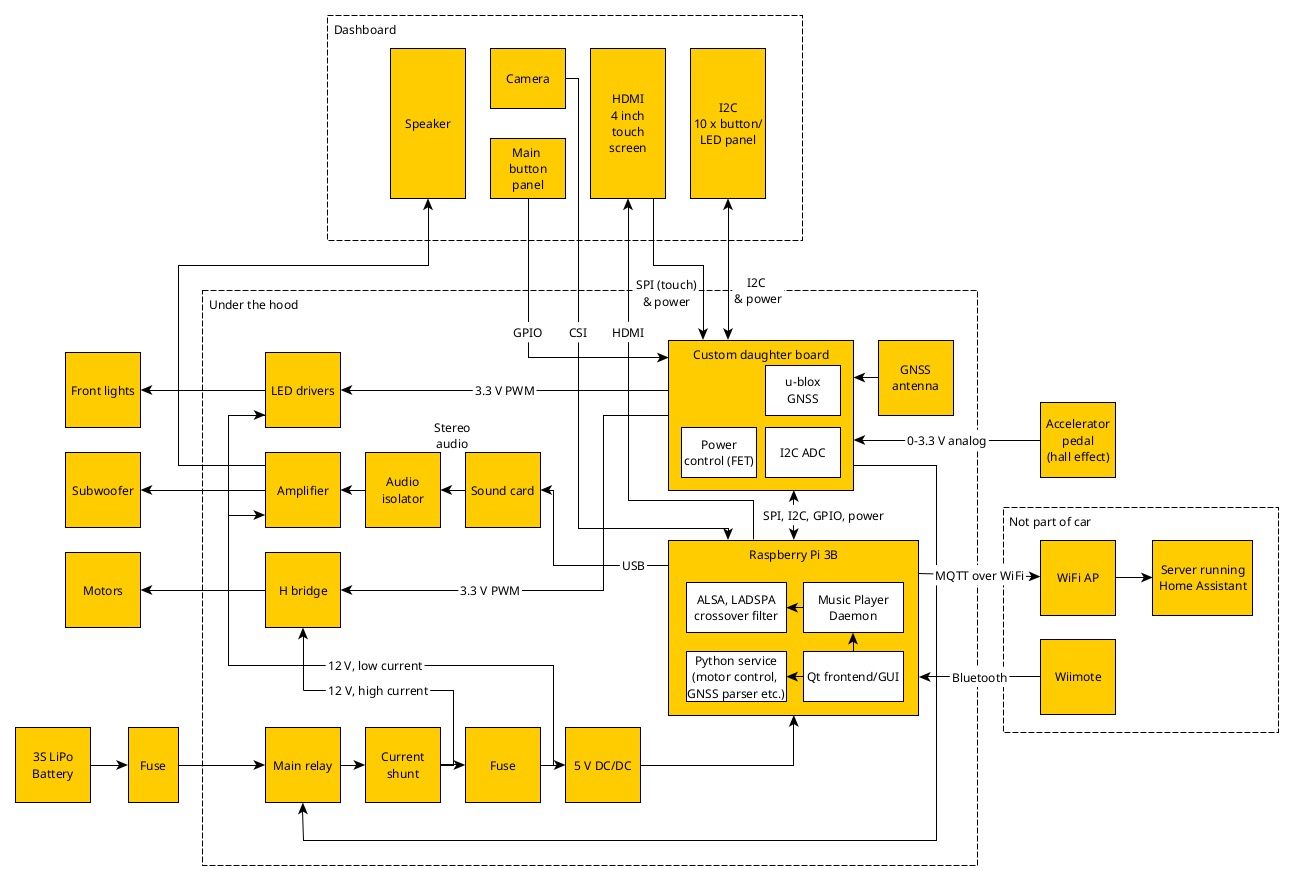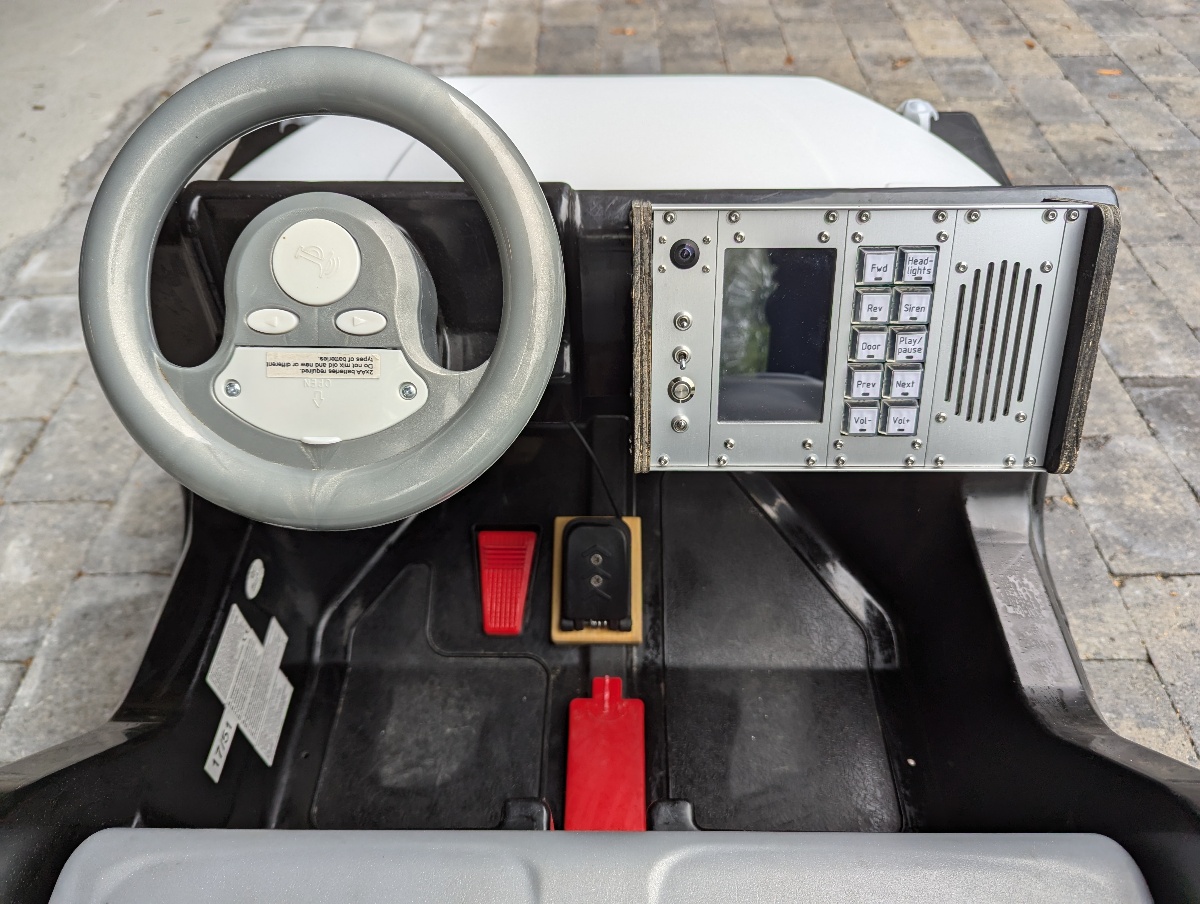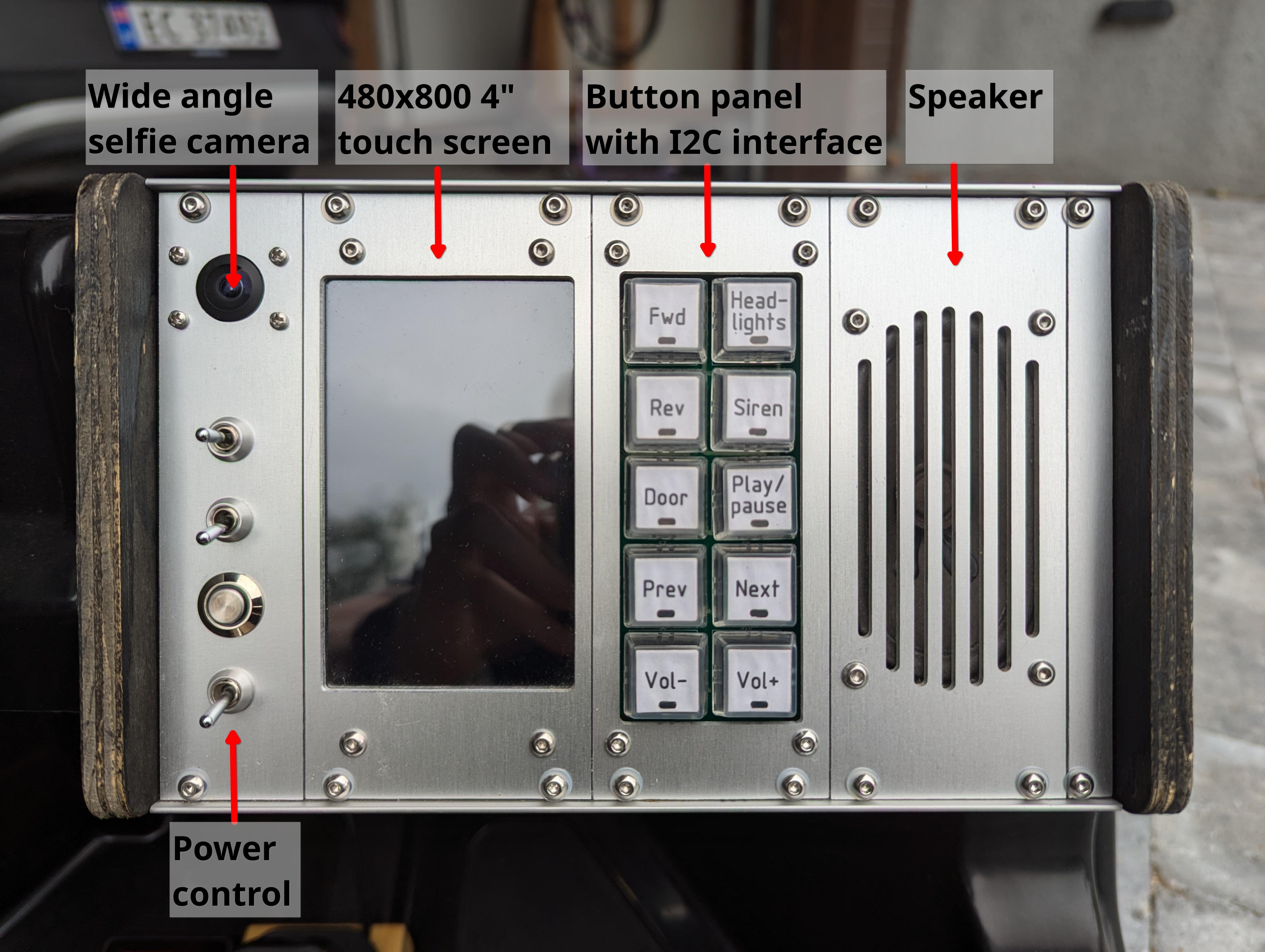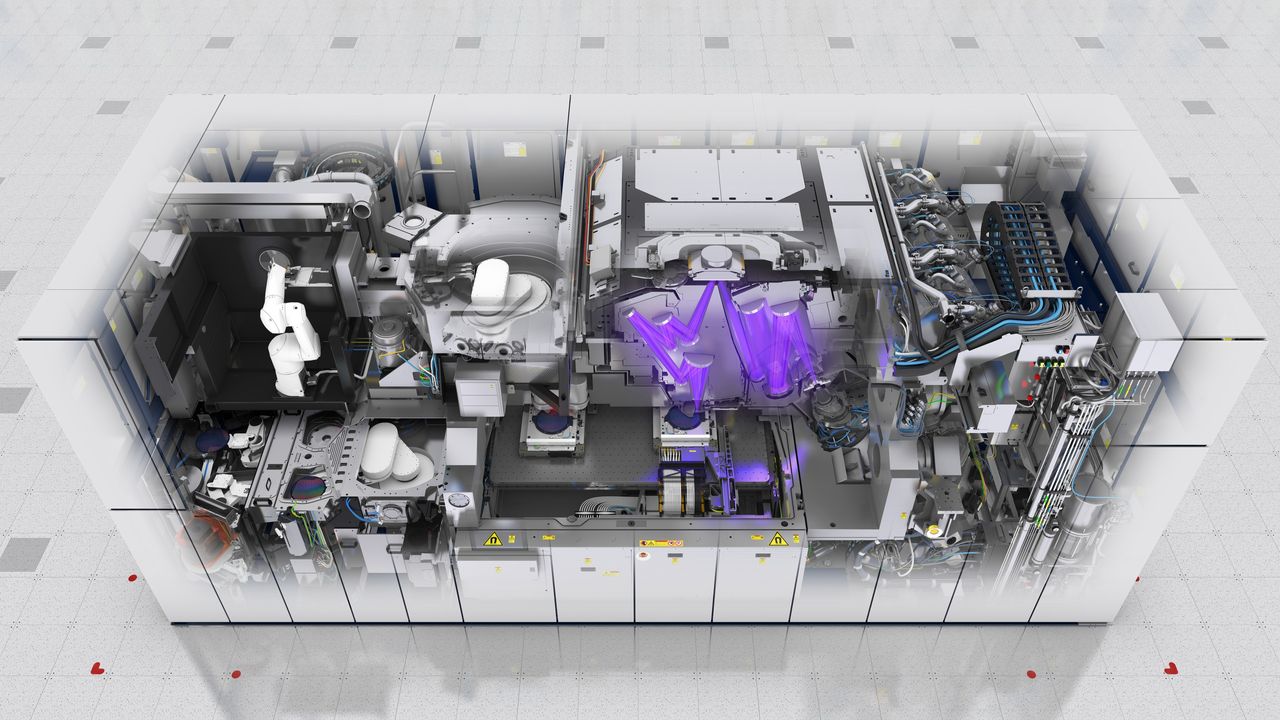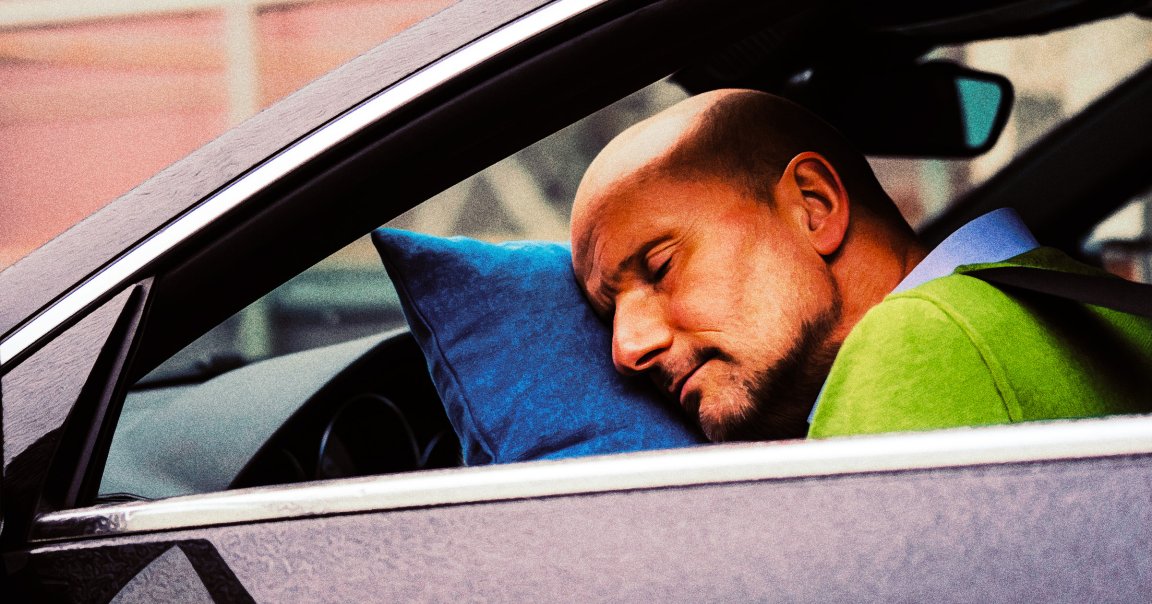To all the dads out there, Jon Skagmo has just raised the bar exponentially to qualify for Father of the Year. He took an electric kids’ car with a dead battery and gave it new life. He also packed it with a Raspberry Pi and touchscreen, a music player system, better motor control, working headlights, and more.

Watch On
Skagmo’s first thought was to build the car for his daughter from scratch. Instead, he focused his energy on what he enjoyed: the electronics. He bought an off-the-shelf electric kids’ car with a dead battery to start, then dug in his heels to modernize it.
This is over-engineering at its finest, folks. Skagmo took a very straightforward that could drive forward and backward and turned it into something much closer to modern automobiles. He built a dashboard for the kids’ car that includes working switches, buttons, a selfie camera, and a touchscreen display and speaker.
Under the hood, he installed a Raspberry Pi 3 with a custom daughterboard. The daughterboard includes a GPS/GNSS chip originally meant for geofencing. Skagmo said he quickly disabled the geofence function because he “realized it was a little naive to keep her inside that small confined geofence.” He can still use it to keep tabs on where she’s driving since the setup connects via Wi-Fi to a Home Assistant server.
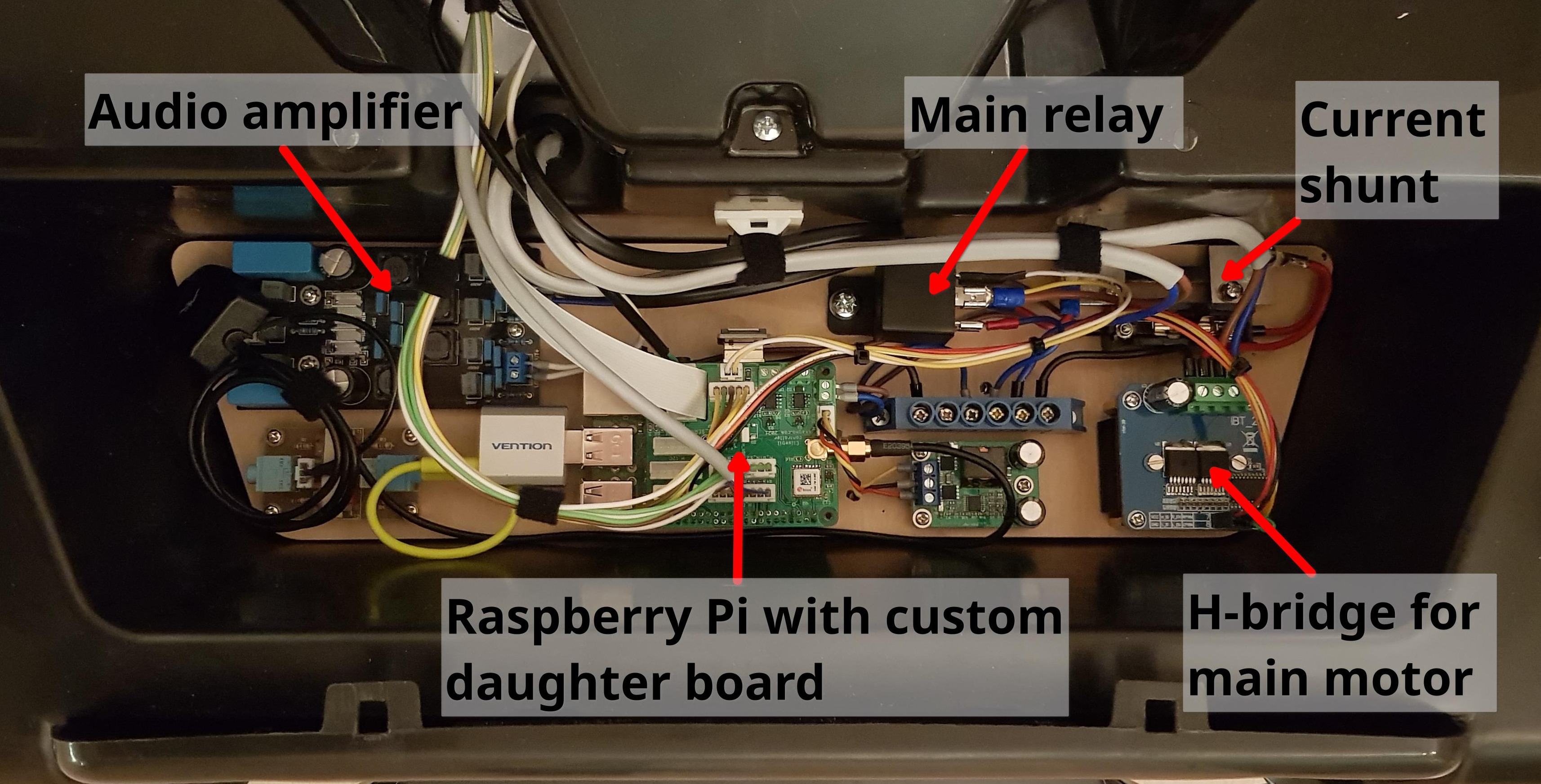
He also wired in a sound system, including an audio amplifier. This connects to a small subwoofer under the seat and a speaker in the dashboard. Other components transform the accelerator pedal to a proportional pedal—the further down the child presses the pedal, the faster the car goes.
Back behind the wheel, Skagmo made the dashboard based on a 3U sub-rack form factor. The sides are plywood, but the panels are machined from 2.5mm aluminum sheets. Skagmo said the dashboard includes a wide-angle selfie camera, which was primarily for “recording fun videos but also useful for two-way video communication with the driver.”
Skagmo also includes a 4-inch 480×800 touchscreen that displays the music playing, essential information like battery life remaining, and the percentage the accelerator pedal is depressed. There’s also a moving map. This was all done using a custom PyQT GUI application Skagmo wrote for the Raspberry Pi.
Next, a 2 x 5 array of physical buttons with LED indicators connect over I2C to an MCP23018 microcontroller. These include switching between forward and reverse travel buttons, turning on the headlights and siren, and controlling the music player. Oh, and just because, why not? There’s even a button using MQTT under the hood to control the garage door.

The car initially just had stickers for headlights, which caused Lightning McQueen a lot of grief. Skagmo found LED “angel eye” lights that fit perfectly into the recessed well for those stickers. Those, too, are wired into the dashboard so Skagmo’s daughter can turn them on and off with a button.
Overall, it’s a terrific project, and it makes me glad my children are grown. I would be hard-pressed to improve on something this cool.


